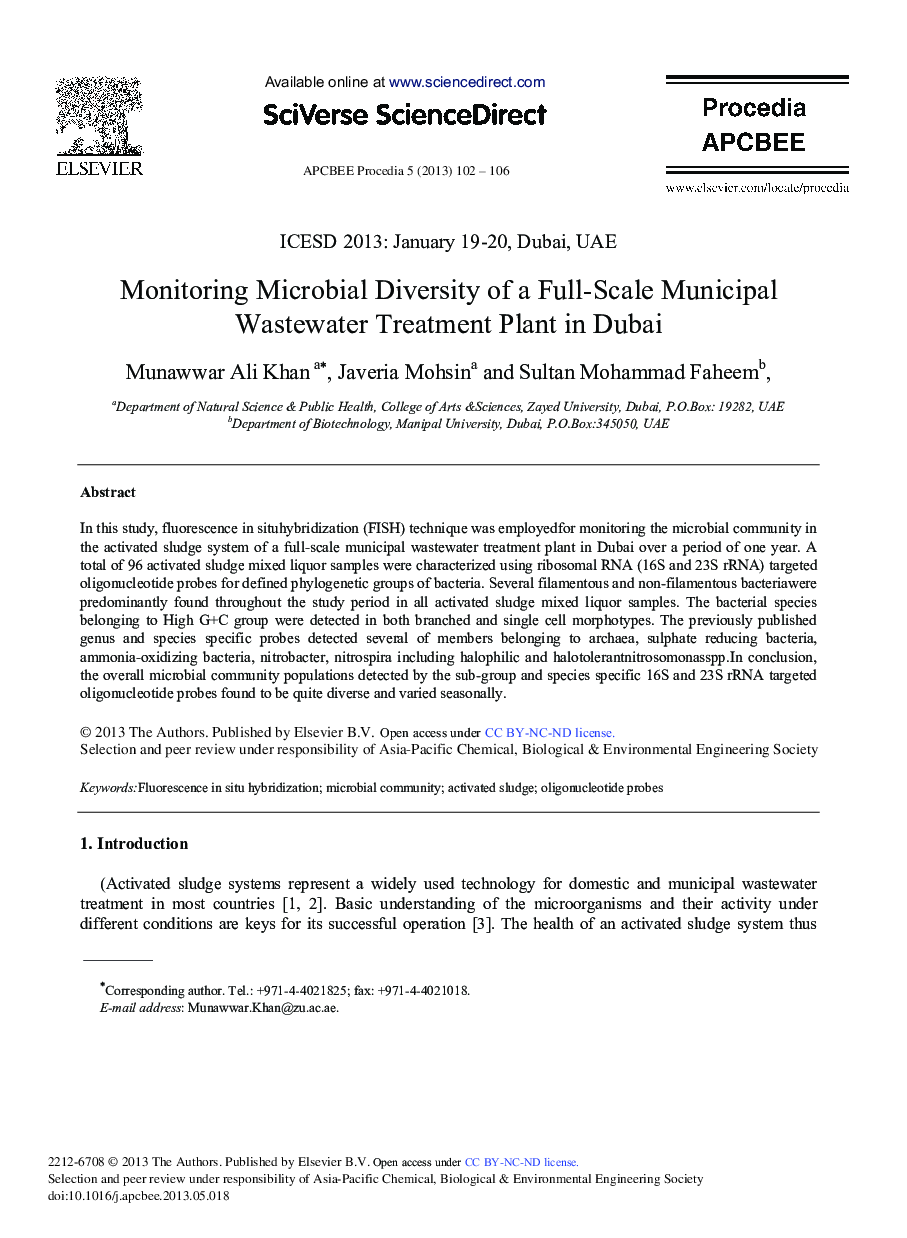| کد مقاله | کد نشریه | سال انتشار | مقاله انگلیسی | نسخه تمام متن |
|---|---|---|---|---|
| 676570 | 1459741 | 2013 | 5 صفحه PDF | دانلود رایگان |

In this study, fluorescence in situhybridization (FISH) technique was employedfor monitoring the microbial community in the activated sludge system of a full-scale municipal wastewater treatment plant in Dubai over a period of one year. A total of 96 activated sludge mixed liquor samples were characterized using ribosomal RNA (16S and 23S rRNA) targeted oligonucleotide probes for defined phylogenetic groups of bacteria. Several filamentous and non-filamentous bacteriawere predominantly found throughout the study period in all activated sludge mixed liquor samples. The bacterial species belonging to High G+C group were detected in both branched and single cell morphotypes. The previously published genus and species specific probes detected several of members belonging to archaea, sulphate reducing bacteria, ammonia-oxidizing bacteria, nitrobacter, nitrospira including halophilic and halotolerantnitrosomonasspp.In conclusion, the overall microbial community populations detected by the sub-group and species specific 16S and 23S rRNA targeted oligonucleotide probes found to be quite diverse and varied seasonally.
Journal: APCBEE Procedia - Volume 5, 2013, Pages 102-106